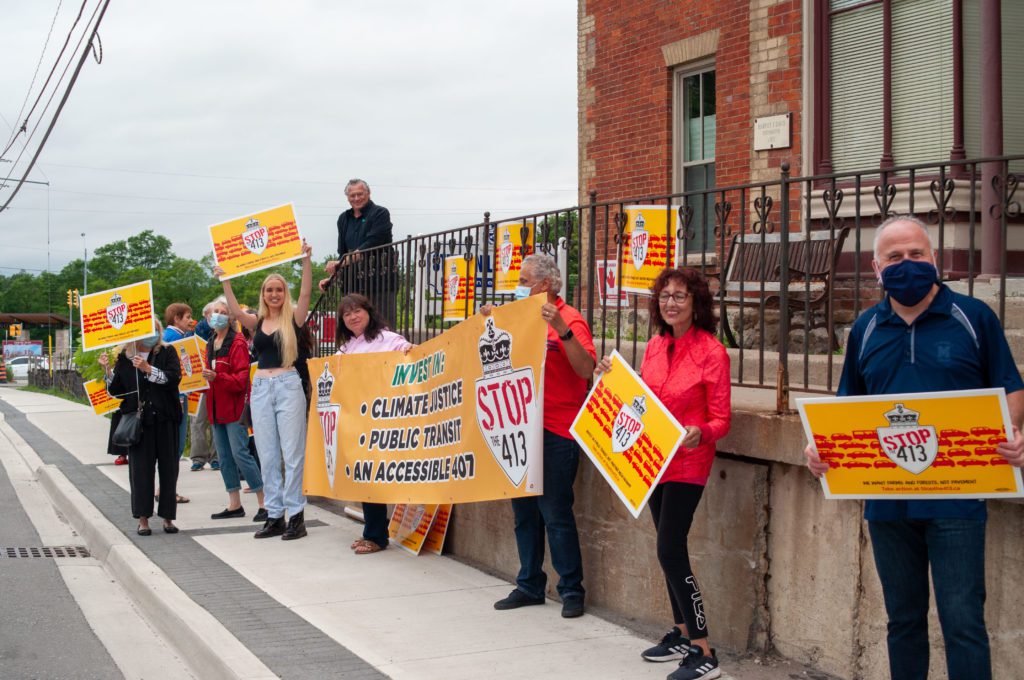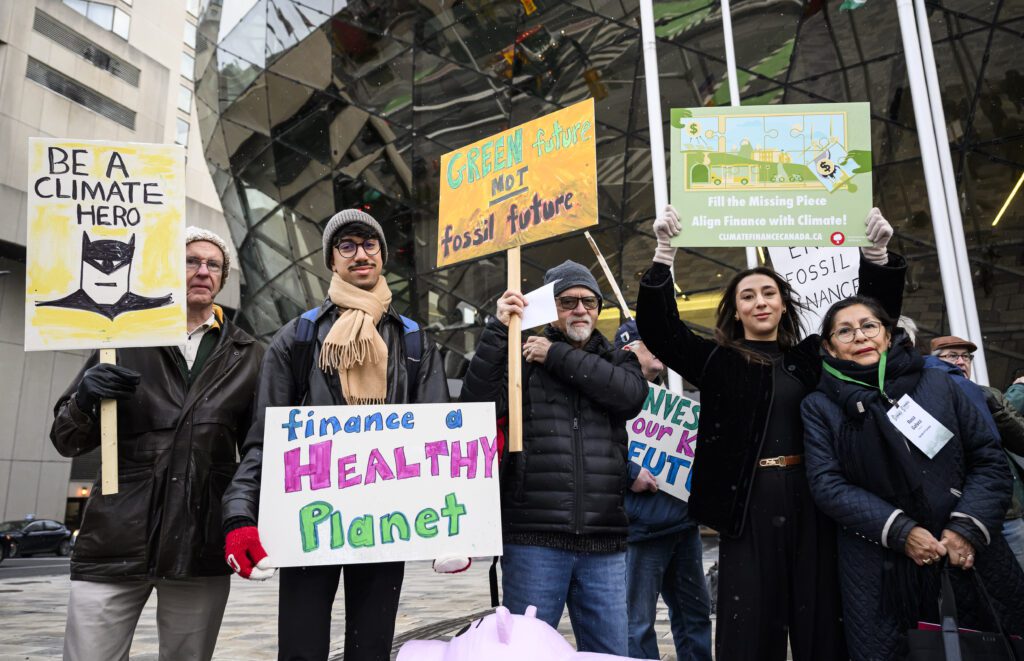In 2023, we are pleased to report that environmental progress in Canada outran the efforts to slow it down. At the international and federal...Read More The post What’s in Store for 2024? Here Are Our 10 Environmental Predictions for...

In 2023, we are pleased to report that environmental progress in Canada outran the efforts to slow it down. At the international and federal levels, significant progress was made on climate action, plastic waste, toxic chemicals and biodiversity conservation. However, progress at the provincial level was mixed, with the roll-out of extreme anti-environmental policies in Alberta and some other provinces. Nonetheless, there was significant progress made in re-protecting the Greenbelt and reining in sprawl in Ontario.
Looking forward to 2024, we expect the federal government will make progress on efforts that are already underway and deliver real results. However, we also anticipate greater challenges at the provincial level, especially for people living in Alberta. They will have to fight to fend off a provincial government and oil and gas industry determined to stop progress on climate action, the creation of clean energy jobs, and a responsible approach to protecting the public from the toxic and expensive consequences of expanding oil extraction.
Here’s our list of the top 10 predictions for the environment in 2024 (in no particular order):

1. Ontario will follow up its reversal of its attacks on the Greenbelt and cities by abandoning plans to push through the building of the destructive Highway 413
In the face of scandal and massive citizen opposition in 2023, the Ontario government pivoted away from its plans to develop the Greenbelt and impose massive urban boundary expansions on Ontario towns and cities for the benefit of its developer friends. We anticipate that in 2024, the proposed Highway 413 will receive a similar backlash as people become increasingly aware of the consequences of paving thousands of acres of farmland, forests and wetlands, contaminating the Humber and Credit Rivers, and destroying unique indigenous archeological sites. Public outrage is also expected over the $10 billion price tag when the money could be more effectively invested in getting trucks off the congested 401, onto the nearby and underused Highway 407, and building public transit. Learn more and take action at stopthe413.ca.
2. Canadians will demand that financial institutions invest in a climate-safe future
It is hard to create a zero-carbon economy if banks and pension funds are still investing in expanding oil and gas extraction. It is even more challenging if these investments mean much less money is available to invest in new fossil-free businesses that are ready to take off. There are also financial risks to investments in fossil fuel projects that must be shut down soon in order to address climate change. As a result, leadership on this issue from the Senate will help set the pace for securing rules that enable the federal government to require companies to disclose the climate risks of their investments and create plans to allocate funds in a manner that is consistent with Canada’s climate commitments. You can read more about this issue here.

3. The federal government will pass the Canadian Sustainable Jobs Act to ensure preparedness for our zero-carbon future
Canada has never excelled at planning major transitions in its economy. From the cod fishery to old-growth forest logging, the usual approach has been to deny that change was fast approaching, do little to plan for the people and businesses involved, and then largely walk away when it all collapses. There is a good sign that we may be turning a corner with the new Canadian Sustainable Jobs Act, which has progressed through Parliament (2nd reading occurred in December) and is on track to become law in 2024. This new law will require the creation and five-year update of a Sustainable Jobs Action plan, outlining the federal government’s plans for facilitating and promoting economic growth, creating sustainable jobs, and supporting workers and communities in the shift to a net-zero economy over the following five-year period. The plans will also detail how the government will invest to decarbonize Canada’s economy, establish conditions for accessing federal economic incentives in relation to labour, and identify pathways to sustainable jobs for workers. You can read more here.
4. Community-level action will stop Ontario from building polluting gas-fired electricity plants, new plans for renewable energy will be launched in Ontario, and the federal government will complete its rules for clean electricity
Ontario wants to massively expand the use of fossil gas to produce electricity and lock us into large increases in carbon emissions and higher electricity prices. Fortunately, community action has so far convinced municipal councils to vote “no” to three proposed gas plants — blocking their approval and construction. Renewable solar and wind are the cheapest forms of electricity and they don’t pollute. They could be paired with hydropower from Quebec, conservation, battery storage and a smarter electricity grid to meet our needs. We expect that the federal government will act to ensure that any gas plants in Ontario must be shut down in a timely fashion to meet its goal of a zero-carbon electricity supply by 2035. You can read more about this issue here.

5. Indigenous Groups will continue to protect their communities and Canada’s freshwater by standing up against toxic tailings and the Line 5 pipeline
Indigenous communities will speak with increasing clarity and certainty about their desire to see their communities protected from the risks of oil and gas development and toxic waste. In particular, efforts will be made to stop the dangerous Line 5 oil pipeline under the waters of the Great Lakes. Furthermore, there will also be a focus on ensuring the federal and Alberta provincial governments finally hold the oil industry accountable for cleaning up the trillion-plus litres of tar sands tailings polluting the Athabasca River and downstream communities. You can learn more here.
6. The federal government will fulfill its promise to eliminate subsidies for the fossil fuel industry
While Canada has already ended public financing of foreign fossil fuel projects, we need to see the federal government finally make good on its promise to end domestic subsidies, including for carbon capture and storage and fossil-fuel-derived hydrogen (which amounted to over $12 billion in 2023). This move will free up taxpayer money to invest in the clean energy transition for Canadians. You can read more here.
7. The federal government will defend its ban on harmful single-use plastics and begin to invest in reuse services and systems
In response to the oil and gas industry’s legal attacks against the ban on single-use plastic items, the federal government will defend its position in the courts and extend the ban to include other harmful and unnecessary plastics. We anticipate the government will also start to seriously support the establishment of accessible return and reuse systems that reduce the need for more plastic packaging. Read more about the bans here.

8. Putting a cap on oil and gas carbon pollution
Rising carbon emissions from oil and gas production have negated reductions from every other sector. As a result, in late 2023, the federal government announced that a new cap and trade program will force the oil and gas industry to reduce emissions by 35 to 38 per cent by 2030. In 2024, we expect the finalization of these new regulations to drive down emissions. We also expect the oil industry to use its money and power over some provincial governments to try to weaken and delay the regulations, take advantage of loopholes to skirt their responsibilities, and ask Canadians to pay for any emission reduction measures. You can read more here.
9. Canada will use its new toxics law and finally pass its proposed environmental justice law
Two important laws were the focus of our attention in 2023. One has been successfully passed, modernizing the Canadian Environmental Protection Act (CEPA), and achieving a long-overdue update of our key environmental protection law. The other law is making its way through the Senate after passing in the House of Commons. Once approved, it will require the development of a national strategy to assess, prevent and address environmental racism and to advance environmental justice. We hope to see this critical law finalized in 2024. In 2024, we expect to see the improved CEPA being used to finally drive action to eliminate PFAS forever chemicals in Canada. These hazardous substances are commonly found in non-stick cookware and other products and pose significant risks to our health and the environment. Learn more here.
10. Albertans will push back against the attacks on their future
The extremism of Premier Danielle Smith will cause the Alberta public to fight back against her attacks on renewable energy, and demand their right to choose a cleaner, more sustainable future. Albertans will express their desire to create a future that is independent of the fate of the oil and gas industry, which will get smaller over time as the world acts to save itself from the threats posed by climate change.
The team at Environmental Defence has a lot that we want to accomplish next year (take a look at our 2024 wish list). And with your help, we can make it happen. This holiday season, please consider making a tax-deductible gift to support our work.
The post What’s in Store for 2024? Here Are Our 10 Environmental Predictions for the New Year appeared first on Environmental Defence.


